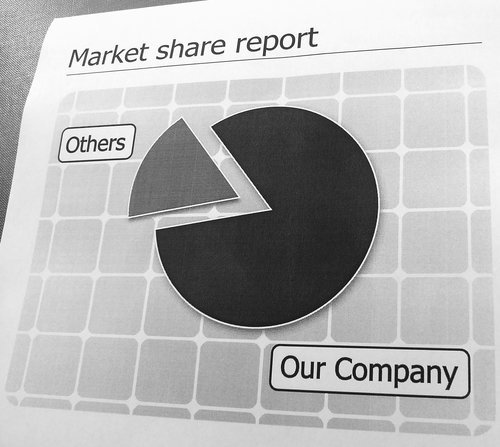Essential Skills
If someone wants to become a designer of advertisements there are several key skills that they need to have. Campaign managers will look for these when choosing the right candidate. It can take years of experience and education to master the art of design.
First and foremost the person should have a good eye for what the general public finds visually appealing. Anyone starting out in the industry should research the most successful marketing examples and analyse their aesthetics. It is a good idea to learn the ins and outs of colour theory in particular. The website BBC features plenty of information on this subject. Understanding it will prevent designers from combining hues that clash.
When given a project the person has to work to a set deadline. Consequently, marketing designers should be adept at time management. If the final product is not handed in on time the client will likely seek someone else for the next one.
Even though modern design is mainly digital the person will still interact with people. Therefore, confidence when faced with social situations is another key skill to have. Throughout the work day employees will talk to their colleagues, managers and clients.
Conveying a Brand
When coming up with a winning marketing idea there are several things to bear in mind. One of the most important roles of a designer is communicating the identity of the company being advertised.
The most successful businesses have a unique selling point. If they have a clear brand it will help to distinguish them from similar firms. A designer will need to collaborate with their client and figure out the best ways to convey the brand to the general public.
It is useful to analyse successful brand designs of the past. For example, the British news industry contains a plethora of competing companies. However, The Guardian has managed to set itself apart through its logo, font and colour scheme. When readers click onto their site they know immediately which news outlet they are dealing with.
Designers can utilise a range of tactics to help boost the public awareness of brands. It is vital that they get approval from the client before going ahead. Throughout the process they may need to redraft until a final version is completed. The designer needs to be patient and take all feedback on board.
Print Campaigns
When the printing press was invented it changed the nature of marketing forever. It meant that large scale campaigns no longer needed to be created by hand. Instead a huge number of identical ads could be produced and distributed. A wide range of different industries began to utilise this new innovative technology.
In the modern world, there are many newspapers and magazines for people to choose from. It is often forgotten that print media was once much less automated. The publications of the past were limited to their local communities. It took a fair amount of time before papers with nationwide runs were finally established. When this happened it meant that specific ads could be seen by people all over the country.
Over the years several high profile newspaper outlets have moved online. There are some exceptions. For example, Sky News never had a print counterpart. This shows that the industry is no longer entirely paper based. Magazines have also started to become digitised. Interestingly the ads are still displayed in page form similar to how they would be viewed in hard copy. The main reason for this is the fact that most readers would have initially been introduced to the magazine in a traditional print media format. In order for these businesses to successfully transition to digital they need to keep their original clientele.
Whilst e-reading devices are very popular standard books have not died out completely. However, marketing companies are less likely to place ads in these publications compared to newspapers and magazines. If there are ads they will tend to be focused on upcoming titles by either the book author or publishing house.
Marketing Through Television
Once print media began to decline marketers needed a new format to showcase their upcoming ads. Television was seen as the ideal solution. Since almost its very inception, TV has featured paid sponsorship. Advertisement companies find TV commercials appealing because they reach a mass audience. In the early days there were only a handful of channels available. This meant that the ads being shown would be viewed by the vast majority of television owners. However, this has changed due to the creation of specialist channels. As a consequence marketers need to focus less on a broad audience and more on particular demographics.
Originally a television host would announce the names of sponsors as well as the products that those sponsors wished to advertise. Eventually breaks between programming were used for short film ads. Over the years these have evolved into a legitimate art form. Numerous TV commercials have ingrained themselves into the landscape of modern culture.
The 1980s and 1990s were arguably the heyday for this marketing format. More money was pumped into television marketing campaigns. New technical innovations allowed for more impressive visuals. Furthermore, the advent of jingles helped to prolong the relevance of numerous brands.
Whilst the internet has overtaken television in marketing terms the older medium is still considered useful. Since many channels cater to one demographic it makes it easier for companies to communicate to their target markets.
It should also be noted that throughout the year there are popular televised events which see a large and broad viewership. Sport tournaments and award shows are good examples. The Super Bowl has become renowned for a plethora of new product ads in between the football action. If a large corporation is hosting the event they may use the opportunity to advertise products sold by its sister companies.
More people are turning their backs on television and moving towards streaming. Because of this the future of TV marketing is very uncertain. If the trend continues then the medium will be utilised solely for specialist marketing. On the other hand, it is possible that television will see a resurgence in popularity. Ironically its future will depend on how well TV sets will be marketed in the future by the next generation of advertisers.
Social Media Marketing
In the past, no one was entirely sure how the marketing industry could best utilise the internet. It was difficult to bring enough online traffic onto individual websites. Therefore, the potential audience was reduced. However, this changed when social media became popular. It grouped millions of people together. The largest sites of this type have become extremely important for advertisement businesses.
In recent years the lucrative nature of social media has attracted the attention of billionaires and forced advertisers to change their strategies. Typically, a company will pay a fee to have their ad placed on these websites. It can take the form of a video or image. There are even interactive ones available. When deciding on how to make the most of social media the firm needs to consider several things.
Since these sites charge their clients to market themselves it can be fairly expensive to do so long term. In fact, some businesses may struggle to find a social media marketing scheme that fits their budget. It is a good idea to have a decent level of capital set aside to spend on these endeavours. The firm should know exactly how long the ads will be displayed. This will give them an idea of how much they need to spend on the campaign. If the manager is not prepared it could end up eating away at their profits.
Another factor is the target market. It is rare for marketers to cater to the wider public. Instead, they stay focused on specific groups of people. That way their strategies will be more effective. It is important to choose a social media company that is popular with people from the right demographics. This can include their age, economic circumstances and cultural backgrounds. Some forms of social media are mainly utilised by teenagers. Others have a core base of users aged closer to 30. Picking the wrong one can be a major error.
The marketing company should plan well ahead by deciding what the main outcome of the campaign will be. Adverts on social media typically contain links to third parties. Consequently, the initial ad will merely be the starting point for the rest of the campaign. Managers have to work with their designers to come up with a secondary site or app that will keep the target market interested. The main aim is to cultivate long-term clients. This sometimes takes the form of a recurring newsletter email. Social media is not the be-all and end-all of the marketing experience. It is a springboard for a larger project.
One of the downsides to this medium is the fact that so many companies have realised its lucrative potential. As a result, a lot of social media websites are saturated with competing ads. In order to succeed the marketing team must come up with something that stands apart from their rivals. It is important to think outside of the box and be creative. One of the main aims is to gain the attention of users through innovation.





